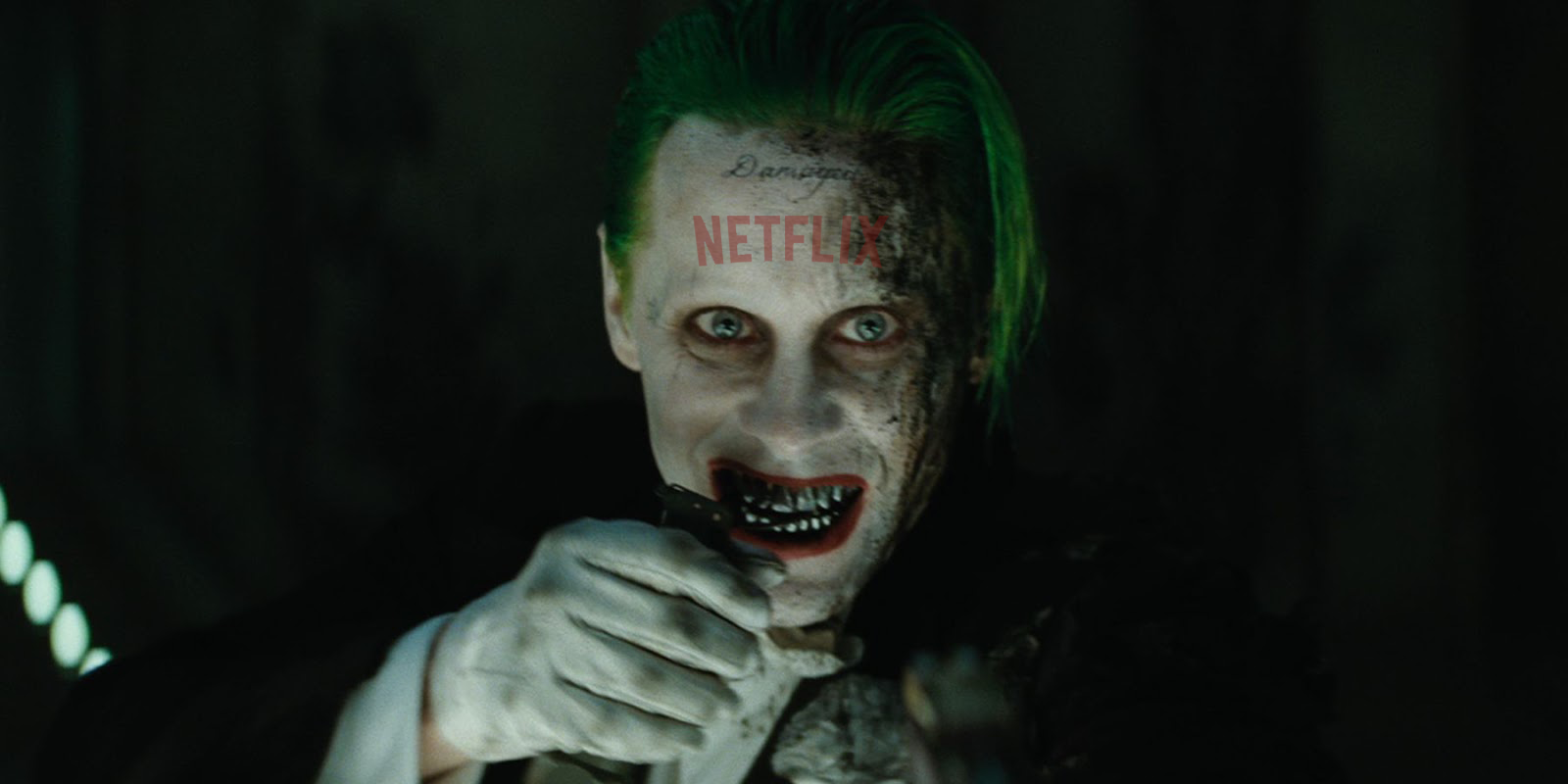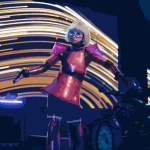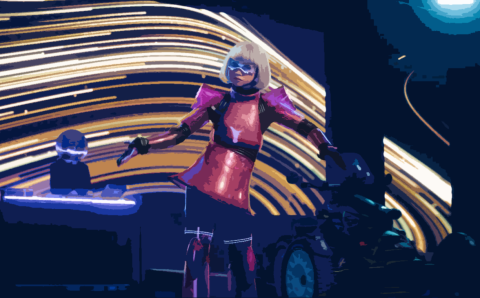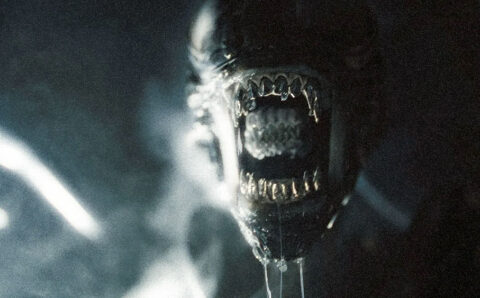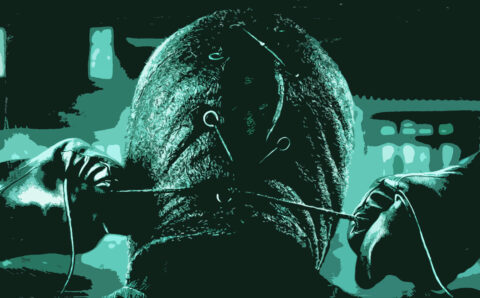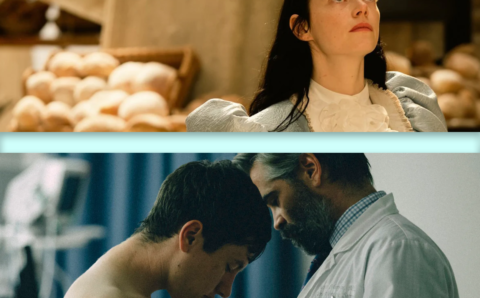No one quite does failing like Marvel does. After an impossibly cogent and compelling run leading into the sprawling Endgame, Marvel proceeded to take all of their creative I.P. that artists had carefully developed over half a century, toss it into an unceremonious blender of streaming piles of hits, and make slop for the couch pigs. Blame us gluttons, fine, but the ingredients could have made for a gorgeous, alternative plating, “deconstructed” perhaps, in Chopped parlance.
While we’ve been busy tracing Marvel Studios’ every flinch in the kitchen, DC Studios actually may have won a few rounds of this cook-off, and with a huge serving of the catalog making its way from Max to wider audiences on Netflix, it’s time for a reappraisal of the last ten years of franchise fun. From the “Martha” to the Amanda Waller, here are the uncomfortable truths it’s time to accept about these supposed flops.
Jared Leto’s Joker works.
A gangster with a psychopathic laugh and a stare that equates common murder with hunger, Jared Leto’s Joker is not the movie-tanking villain you remember. With cliched tattoos prominent in the early promotion materials for Suicide Squad, the internet had made up its mind on the supposed blasphemy of the revised character before we were ever able to see how Leto would play him. This version was such a vicious nihilist that the tattoos the internet first read as serious looked instead like ironic appropriations; he was a gangster, yes, but so inhumanly apart that his body was just an avatar. It was a disturbing nonchalance and unpredictability, a valid spiritual successor to Ledger’s more Earthed evergreen demon.
The giddy Jesse Eisenberg was a fitting villain for Henry Cavill.
Good writing is finding the right contrast to challenge your main character. There’s a reason that the Joker is Batman’s most feared match and not Superman’s, just as there is a reason Lex Luthor is. Luthor threatens Superman’s physical powers with cognition alone. There is no way for Superman to wield his power to ensure he has the upper hand; Luthor is clever, resourceful, and uncaring enough to find the ways to attack Superman that Kent could never imagine.
There’s a joy in that trickery, and Eisenberg found it. His staccato laughs and eager jumpiness are the marks of a prankster intellectual so far into their own machinations that there’s barely a conscience left to guide them. That disassociation is perhaps the farthest one could plot opposite Clark Kent’s Boy Scout heroism.
Both Suicide Squad movies are entertaining.
James Gunn calcified Marvel’s tone when he cast Chris Pratt in Guardians of the Galaxy and tapped into tongue-in-cheek characters that extended Jon Favreau’s choices in Iron Man and prefaced Taiki Waititi’s hypersatiric Thor: Ragnarok. The choice was perhaps the one that officially made Marvel the cross-generational and cross-genre hit it was never necessarily destined to be. When Gunn rebooted David Ayers’ Suicide Squad, it’d be easy to think he merely remade Guardians and slapped an R-rating on it. In some ways, I argued at the time, he did. Almost everything about this very familiar group of misfits who have to learn how to work and love one another felt a bit like red paint on a just-rotting apple by the film’s release in 2021. But Gunn knows how to entertain all the same, though Ayers’ is the movie that actually embraces the paint, then chops up the apple and assembles it in the shape of a transformer yelling Credence Clearwater Revival. Good. Play with your food when it’s this gross.
Joel Kinnaman did the impossible.
Casting directors don’t exactly have enviable jobs. Like whack-a-mole, just as they successfully hammer down one perfect casting for a script, several other needs surface. Vin Diesel reportedly has to wear lifts to look even remotely intimidating next to the otherwise well-cast The Rock in the Fast and Furious franchise. Tom Cruise, often the same with his co-leads. Zemeckis had to reshoot half of Back to the Future when Eric Stolz couldn’t conjure the right charisma, a swap that even made its way into The Flash as a multiverse gag.
Perhaps nowhere in the DC universe was it more important to wield the mole mallet well than it was in casting Rick Flag. In an unenviable position himself, Flag heads the Suicide Squad, a ragtag fraternity of incarcerated, gray villains offered redemption for their services as mercenaries. Flag has to be believable going toe to toe with the most vile and alpha of characters, the mole to take down the rest. He must genuinely look unvexed whenever Killer Croc snarls or Deadshot picks up a handgun. He has to seem unimpressed by the most elite warriors, and then appear competent and capable just a few moments later when an attack unfurls.
Easier drawn than acted, Joel Kinnaman’s smarmy rakishness was a welcome surprise in David Ayers’ Suicide Squad. First known as a talented but devastating, drug-addicted cop in AMC’s excellent mystery series The Killing, Kinnaman has since found a calling in sci-fi and action, playing the titular Robocop in the underrated reboot and enjoying a short-lived run in what for a time was Netflix’s flagship adult sci-fi series Altered Carbon. His casting was so fitting in Suicide Squad that James Gunn and company opted to keep him center-screen in The Suicide Squad. There, Kinnaman continues to look believably nonplussed at every shenanigan from his cast of villains — lifts not required.
“Martha” was never that bad; you’re just jaded.
The refrain that turns warring heroes into allies will go down as one of the most cynical of early 21st-century memes. A less repressed and combative species would have welcomed the empathy. When Batman realizes Superman’s mother shares the same name as his own, his defenses relax and the title “vs.” mercifully fades to black in Batman vs. Superman: Dawn of Justice — a movie with a title so on the nose that Google’s search crawlers should flag it as possible SEO manipulation. But where titles fail to frame the human element, “Martha” at least tried. A shared identity between mothers could give pause to someone seeing red, quickly rendering the face they’re about to smash as cherubic and desperate. Your problem if the exchange didn’t resonate was not you either, but the year. 2016 was a real piece, second in recent years only to 2020, and I’m not sure we would have survived as ably as we did without cynicism to sort the disingenuous from the earnest and real. So go easy on Zach Snyder’s deus ex machina now — for all you know, your two moms share the same name, too.
Literally turn the movies off before their final acts and be happy about it.
Two-thirds of a strong film is better than no thirds. While illustrators can contour inhuman muscle and represent the devastation these characters create, directors have to situate the characters relative to the real world as a backdrop. That means CGI, and because it’s still the first half of the 21st century, it means shiny, uncanny valley CGI. These DC live-action cartoons couldn’t feel less threatening if Chris Pratt donned 10% of an Italian accent and did the voice work. The at first nuanced Man of Steel devolves into a useless aerial climax of god against god, even as lead Henry Cavill does his best to ground the narrative. Batman vs. Superman suffered the same with a Doomsday about as imposing as the Stay Puft marshmallow man. Which is all to say that you, watcher, can and should do the unthinkable: watch a movie without intending to finish it. Vote with your remote. Give Warner Brothers the feedback of watching 90 minutes and bailing. Maybe the pitches for these stories will start including acts that don’t involve boss fights and finally do justice to this strong league of actors.
Ryan Derenberger is a freelance journalist and editor, a Journalism and AP Language teacher at Whitman HS in Bethesda, MD, and the founder of 'The Idea Sift.' He also serves on the board of directors for student journalism nonprofit 'Kidizenship.'

